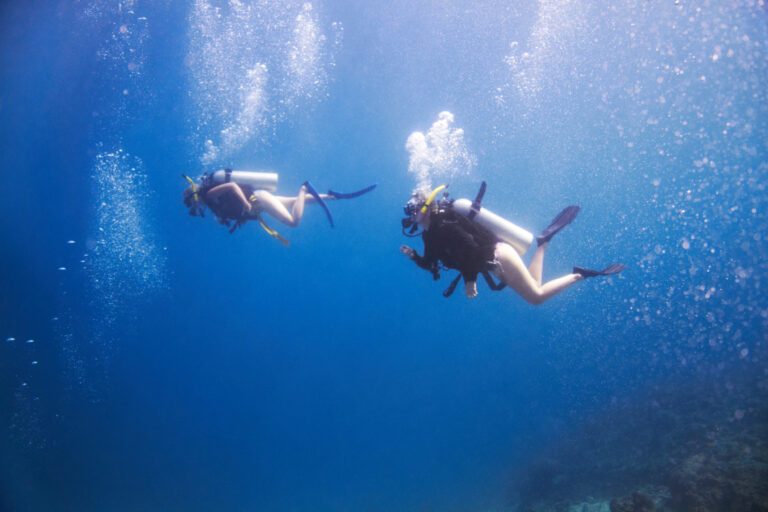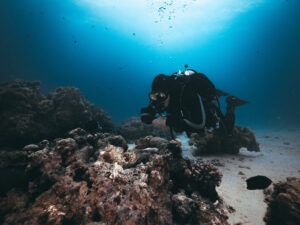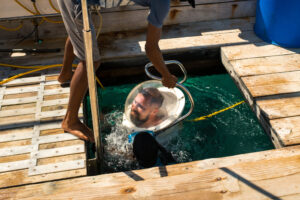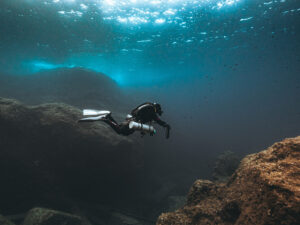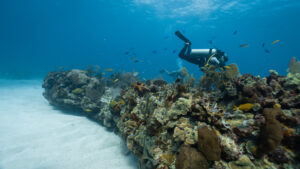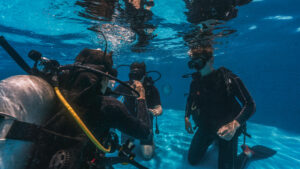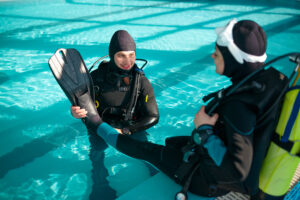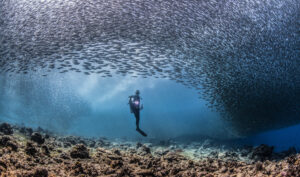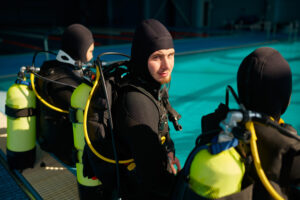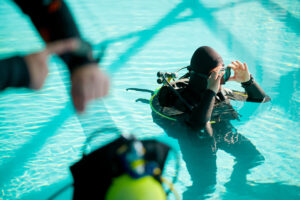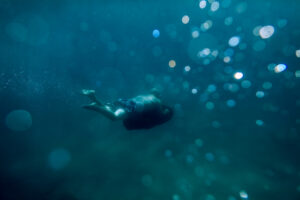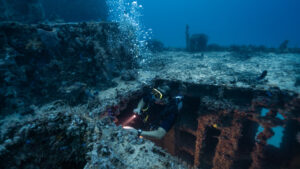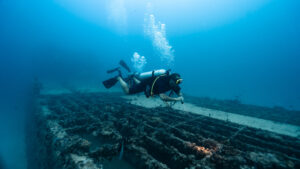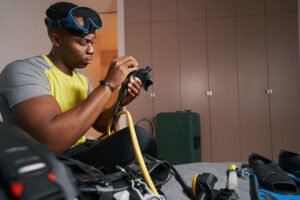What is Upstream in Scuba Diving?
In the realm of scuba diving, “upstream” refers to a direction that goes against the flow or current of a body of water. Upstream swimming is often more challenging due to the added resistance posed by the water’s flow. This term also carries metaphorical implications, suggesting the act of overcoming obstacles or facing challenging situations. This entry provides an in-depth exploration of the concept of “upstream” in scuba diving, including techniques, challenges, and safety considerations.
Understanding Water Currents
Water currents play a significant role in the experience and challenges of scuba diving. Currents, caused by various factors such as tides, wind, and water temperature differentials, can move in different directions and at varying speeds. An “upstream” direction signifies a movement against these currents. The ability to identify the direction of the current is vital for a diver’s navigation, energy conservation, and safety.
Techniques for Upstream Diving
Navigating against the current requires specific techniques and strategies. The key is to minimize resistance and optimize energy usage. Divers often use the “frog kick” or “modified flutter kick,” which reduces the water resistance compared to the traditional flutter kick. Adopting a streamlined body position also aids in reducing the effort required.
It’s also crucial to use the underwater topography to your advantage. Staying close to the seabed or behind large objects like rocks can provide a break from the current. Divers often employ a technique called “pull and glide” in strong currents, where they use their hands to pull themselves along the bottom or on a fixed object, then glide as far as they can before repeating the process.
Challenges of Upstream Diving
Swimming upstream can be physically demanding and requires increased air consumption. It’s important for divers to monitor their air supply vigilantly and turn back or end the dive if it depletes quicker than expected. Besides, the effort of swimming against the current can lead to rapid fatigue, making it critical for divers to assess their physical fitness before engaging in upstream diving.
Moreover, visibility can be reduced when swimming against the current, as it tends to stir up sediment. This factor, combined with the physical exertion, can lead to disorientation, making it essential for divers to maintain a keen sense of their surroundings and regularly check their compasses.
Safety Considerations
Safety is paramount when it comes to upstream diving. Divers must always plan their dives, accounting for the strength and direction of the current, their physical abilities, and the amount of air they have. It’s typically safer to start the dive by swimming against the current, so the return to the exit point is easier with the current’s assistance.
Moreover, divers should not attempt to fight a strong current; if the current is too strong, it’s recommended to abort the dive. If caught in a strong current, divers should remain calm, signal to their buddy, and consider using a surface marker buoy (SMB) to alert surface support.
Environmental Impact
Divers should also be aware of their impact on the marine environment. Upstream diving often involves bottom contact, which can potentially harm delicate marine life. Divers should practice good buoyancy control to minimize their impact and follow the principle of “Take only pictures, leave only bubbles.”
Equipment for Upstream Diving
Suitable equipment is crucial for managing the difficulties of upstream diving. A high-quality, well-maintained regulator ensures that air supply is unaffected by the increased demand. Also, divers should consider wearing a slightly heavier weight belt to counteract the buoyancy caused by the increased air consumption.
Fins play a vital role in upstream diving. Divers may opt for stiffer fins that provide more propulsion, helping overcome the resistance of the current. However, these fins might also require more leg strength and stamina. Therefore, the choice of fins should align with a diver’s physical fitness level and comfort.
Dive computers or watches with compasses are also invaluable tools. They aid in navigation and keep track of dive time, depth, and ascent rate, all of which can be influenced by swimming against the current.
Training and Preparation
Given the challenges and risks associated with upstream diving, adequate training and preparation are non-negotiable. Divers should take specialized courses that cover techniques, safety measures, and emergency procedures related to current diving. Hands-on training in controlled conditions enables divers to familiarize themselves with the feel of swimming against the current before attempting it in the open water.
Physical conditioning is also critical. Regular cardiovascular exercises and strength training, particularly targeting leg muscles, can significantly enhance a diver’s ability to manage the physical demands of upstream diving.
Emergency Procedures
Despite careful planning and precautions, emergencies can happen. It’s crucial that divers are prepared to handle them. In case of exhaustion or rapid air depletion, divers should signal their buddy and ascend safely, making a safety stop if necessary. If a diver gets swept away by a strong current, the standard procedure is to surface, deploy an SMB, and wait for surface support.
For disorientation or loss of visibility, divers should stop, think, and act. They should try to reestablish their bearings using their compass or landmarks, and ascend if necessary. Divers should always remember that their safety and life are more important than any dive.
The Role of Buddy Diving
In upstream diving, the buddy system’s importance is amplified. Buddies can assist each other in navigation, monitor each other’s air consumption and fatigue levels, and provide immediate help in case of emergencies. Good communication, both pre-dive planning and underwater signaling, is key to effective buddy diving in currents.
The Reward of Upstream Diving
Despite its challenges, upstream diving can be a rewarding experience. It provides unique opportunities for exploration and encounters with marine life, which often congregate in currents. With the right skills, equipment, and mindset, divers can safely enjoy and learn from the experience of going against the current.
In conclusion, upstream diving, representing the spirit of challenge and exploration, is an integral part of the scuba diving world. It demands respect and preparation, but also offers unique rewards to those who venture against the flow.
Key Takeaways
In scuba diving, swimming “upstream” against the current poses unique challenges and risks, but it can also offer rewarding experiences when done correctly. Understanding water currents, mastering specific techniques, and following safety guidelines are vital for a successful and safe upstream dive. Divers are reminded to respect the marine environment, ensuring that the wonders of the underwater world are preserved for future generations to explore and appreciate.

